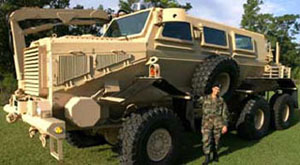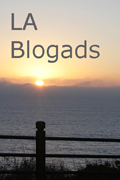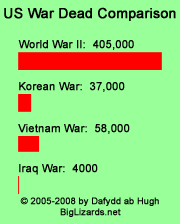June 26, 2007
Wacking the Moles, Sealing the Holes
Warning, this post contains no great analysis, no brilliant insights, and no genius-level discovery of hitherto unrealized connections. In other words, it's a great departure from typical Big Lizards fare.
Instead, I assume the smart-man's burden of straight reporting (more or less) of what you might not have seen, depending on how deeply you bore down into the boring world of mainstream journalism.
First, a bit from AP about Operation Marne Torch in Diyala province:
Newly arrived U.S. troops southeast of Baghdad are destroying boats on the Tigris River and targeting networks believed to be bringing powerful roadside bombs from Iran as the military cracks down on extremists from all directions, military officials said.
But a top U.S. commander warned on Monday that three or four times more Iraqi security forces are needed to sustain the progress in clearing the area and stanching the flow of arms and makeshift bombs into the capital....
The brigade commander, Col. Wayne W. Grigsby, Jr., said 21 boats had been destroyed on the river and in the reeds on the banks since the operation began in force on June 15, most with secondary blasts indicating many were filled with explosive material.
He also said the military had gained intelligence from a local sheik about networks bringing armor-penetrating explosively formed projectiles, known as EFPs, on a major road that travels from the border with Iran through Shiite areas to Baghdad. The U.S. has accused Iran of supplying mainly Shiite militias with EFPs, but Tehran has denied the allegations. [EFPs are also sometimes called explosively formed penetrators; even the Pentagon can't seem to make up its mind which phrase to use!]
Lynch said the area had two battalions from the 8th Iraqi army division but added "there needs to be three or four times more Iraqi security forces than are currently present to provide for sustained security. That's the critical piece in all of this."
From June 15th to the 26th is 11 days; that's two boats per day average, though I'm sure it varies day by day. Bill Roggio at the Fourth Rail gives a for-instance:
In Northern Babil province, Operations Marne Torch and Commando Eagle continue. On June 23, Coalition forces detained four suspects, destroyed two trucks and two barges used to transport insurgents and equipment, and found two weapons caches during operations south of Salman Pak. Coalition forces also detained 19 members of an IED cell near Mahmudiyah. The cell is believed to have brought down a bridge in northern Babil....
Maybe I just haven't heard about it before, but I think this riverine campaign is new: attacking boats that insurgents have been using to transport explosives. Obviously, a barge can hold tremendously more cargo than a truck; thus every barge destroyed is the equivalent of at least a "weapons cache," perhaps two -- judging from the size of most such caches that we see on TV. Killing these barges is a very big deal: As Col. Grigsby said, each of those "secondary explosions" was the sound of insurgent munitions dumps going up in smoke.
As for the "networks bringing armor-penetrating... EFPs... from the border with Iran through Shiite areas to Baghdad," mentioned without much comment or analysis by AP, Roggio again has deeper information:
Coalition forces maintain pressure on the Iranian backed "secret cells" of the Qazali Network. A raid in Sadr City resulted in the death of "four Secret Cell terrorists."
In earlier posts, Roggio has extensively discussed Qazali:
Over 20 members of the network were killed, 6 wounded and 1 captured in the raid against “the secret cell terrorist network known for facilitating the transport of weapons and explosively formed penetrators, or EFPs, from Iran to Iraq, as well as bringing militants from Iraq to Iran for terrorist training” in Amarah and Majjar al-Kabir....
The raids in Amara and Majjar al-Kabir are the latest in a series of Coalition and Iraqi operations designed to dismantle the Qazali and the Sheibani networks, which are Iraqi manned and led networks operated by Iran’s Qods Force. Coalition and Iraqi forces killed at least 47 members of this network and captured 88 since major operations began in April 27, 2007.
These networks also have deep ties with Muqtada al Sadr’s Iranian backed Mahdi Army. “The dead are believed to be Shiite militiamen loyal to radical cleric Muqtada al-Sadr who is a dominant force in Maysan province,” Fadhel Mushatat reported from Amara.
Multinational Forces Iraq has essentially taken off the gloves with identifying Iran’s involvement in backing the Qazali and the Sheibani networks. “Intelligence reports indicate that both Amarah and Majjar al-Kabir are known safe havens and smuggling routes for Secret Cell terrorists who facilitate Iranian lethal aid,” noted the Multinational Forces Iraq press release. Qods force is directly identified. “Reports further indicate that Iranian surrogates, or Iraqis that are liaisons for Iranian intelligence operatives into Iraq, use both Amarah and Majjar al-Kabir as safe haven locations.”
Meanwhile, the New York Times explicates a brutal tactic -- houses rigged with bombs -- to which al-Qaeda in Iraq has increasingly turned, as they fail and fail, and fall and fall to American and Iraqi forces.
This story is very well written, almost novelic -- which is not surprising, as the author, Michael R. Gordon, has written at least two narrative histories: The Generals' War : The Inside Story of the Conflict in the Gulf, and Cobra II: The Inside Story of the Invasion and Occupation of Iraq. Here is one platoon's adventures on a single day, in a single neighborhood of one city, Baqouba, capital of Diyala province:
The enemy was a phantom who never showed his face but transformed a neighborhood into a network of houses rigged to explode....
Tracer rounds zipped through the air as the soldiers fired antitank weapons, mortar shells and machine guns at the abandoned houses they planned to inspect across the street.
They calculated that the firepower would blow up any bombs the insurgents might have planted in the houses, while providing cover so the first squads could move south across the thoroughfare.
The use of house bombs is not a new trick, but as the soldiers were to learn, the scale was daunting. The entire neighborhood seemed to be a trap.
For those who remember our post about Cougers and Buffalos and other "MRAPs," here is a blast from the past:
Enter the MRAP: the Mine Resistant Ambush Protected class of vehicles. The Marines and the Army have more or less settled on the Couger H-series of MRAP and the Buffalo H-series of Mine Protected Route Clearance (MPCV) vehicles, both manufactured by Force Protection Inc... the latter being a somewhat larger version of the Cougar, equipped with a fork-toothed arm for explosive ordnance disposal (the Buffalo's nickname is "the Claw"):

Couger H-series MRAP (L) and Buffalo H-series MPCV (R)
The great innovation of the MRAP is to redesign the undercarriage itself... and to correct the flaw that made our earlier combat vehicles so vulnerable: their underbelly flatness. MRAPs have a V-shaped hull that channels blast effect to the sides of the vehicle, graphically demonstrated here. Even EFPs have trouble penetrating the undercarriage of an MRAP:
MRAP taking blast; explosive force is redirected to sides of vehicle
You'll be tickled to see that our new toys are already being used in combat in Iraq -- saving American lives and helping to win the Iraq war. From the Times article:
But there were a few early indications that the bomb threat in the area might be more challenging than the Americans had expected. The street the soldiers had raced across was strewn with slender copper wires, which the insurgents used to set off buried bombs powerful enough to upend armored vehicles.
As the platoon watched from its new foothold south of the road, a Buffalo vehicle, a heavily armored truck with a V-shaped body to dissipate bomb blasts and a giant mechanical claw, began to scour the nearby roads for bombs. It found three, which were exploded by American combat engineers.
“Controlled dets,” a soldier called out, referring to a deliberate detonation of a discovered bomb. The good news was that the buried bombs had been found and neutralized. But some had been deeply buried on the road the platoon had just crossed.
One interesting point about Americans is that we take our sense of humor with us wherever we go. Even when clearing houses and streets that have been turned into a weird, live-action videogame of explosives, springtraps, and other deadly snares:
To blast a path through the next bomb-ridden stretch of road, combat engineers brought in a mine-clearing device. A bright fireball appeared over the street and a cloud of gritty dust engulfed the platoon’s house as the soldiers huddled in the back and plugged their ears.
Afterward, as Sgt. Philip Ness-Hunkin, 24, walked to the house next door, he saw copper wires leading to the home. The gate was unlocked and the front door was invitingly open.
“Right in the front door there was a pressure plate under a piece of wood,” he said, referring to a mine that is set to blow when it is stepped on. “Over in that neighborhood there were wires going all over the place.”
“H-BIED,” a soldier called out, using the military’s acronym for a house-borne improvised explosive device.
"House-borne" improvised explosive devices! Only from Americans.
In the end, the platoon commander, 1LT Charles Morton, asked for the entire block of houses to be destroyed by artillery, since it was virtually impossible to move the platoon forward through the maze of munitions and copper-wired mines:
The next morning, an M1 tank arrived. The neighborhood reverberated with enormous booms as soldiers blasted the homes suspected of containing bombs with antitank missiles, artillery and tank fire. The platoon’s advance had been stymied for a day, but there were no American casualties and more bombs had been cleared out.
I have great faith in American military ingenuity; I predict that in just a few weeks, we'll have a much faster and more effective way to stymie such HBIEDs without having to blow up entire city blocks. But in the meanwhile, we are allowing nothing to stop our counterinsurgency operations: Phantom Thunder, Arrowhead Ripper, Marne Torch, and all the ancillary battles they spawn.
All we need now are more -- and more trustworthy -- Iraqi National Police to supplement the Iraqi Army. I am confident we'll get them; we're finally making incredible progress, and the Shiite Maliki government has no interest in handing Iraq back to Sunni insurgents.
They had a bellyful of that for forty years.
Hatched by Dafydd on this day, June 26, 2007, at the time of 4:15 PM
Trackback Pings
TrackBack URL for this hissing: http://biglizards.net/mt3.36/earendiltrack.cgi/2208
Comments
The following hissed in response by: Seaberry
Looking good. Here's another interesting link on the operations:
The above hissed in response by: Seaberry ![[TypeKey Profile Page]](http://biglizards.net/blog/nav-commenters.gif) at June 26, 2007 7:20 PM
at June 26, 2007 7:20 PM
The following hissed in response by: Trickish knave
Great link, seaberry.
American ingenuity is the best kind...
The above hissed in response by: Trickish knave ![[TypeKey Profile Page]](http://biglizards.net/blog/nav-commenters.gif) at June 27, 2007 4:03 PM
at June 27, 2007 4:03 PM
Post a comment
Thanks for hissing in, . Now you can slither in with a comment, o wise. (sign out)
(If you haven't hissed a comment here before, you may need to be approved by the site owner before your comment will appear. Until then, it won't appear on the entry. Hang loose; don't shed your skin!)© 2005-2009 by Dafydd ab Hugh - All Rights Reserved















